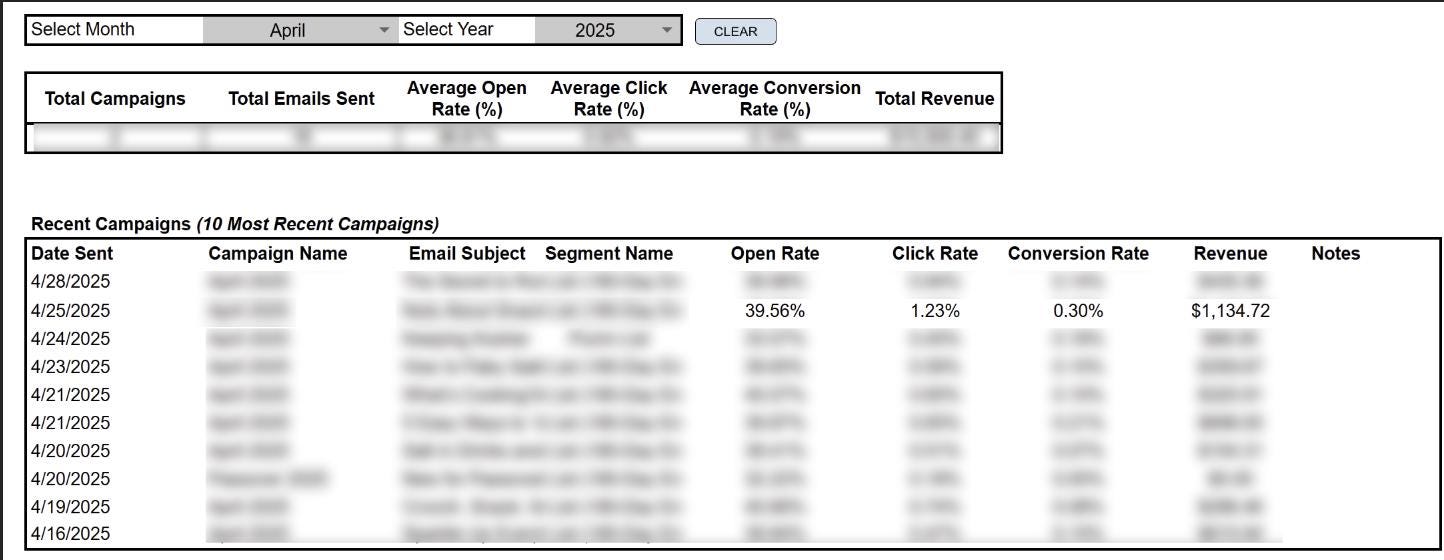Most small business owners juggle social media, paid ads, and day-to-day operations and put email marketing on the back burner. Yet email today still drives more sales, engagement, and repeat business than almost any other channel. When you own your list, you own the conversation.
In this post, you’ll see why email marketing outperforms other digital marketing tactics and how to get started even if you’re short on time.
Common Pain Points That Keep You from using email
Many entrepreneurs feel stretched thin managing multiple channels. You post on social media, run ads, handle customer inquiries, and oversee operations. Adding email marketing to your to-do list can feel like piling on. It’s easy to think, “I’ll get to email when things calm down,” even though those “calm” moments rarely come.
Finding time for content only adds to the challenge. You already write social posts, blog updates, and campaign copy. Drafting an email can seem like “one more thing” you just can’t squeeze into your schedule. Even the idea of writing a subject line and body copy can make you pause, wondering where you’ll find the extra hour.
Then there’s the worry about payoff. You’ve invested in ads that didn’t perform as expected. You hesitate to pour time and energy into email marketing without a clear guarantee. It’s natural to ask, “What if no one opens my emails?” or “What if I spend weeks and don’t see a return?” That uncertainty can keep you stuck—and miss out on a high-return channel.
Affordable Email Solutions for Busy Entrepreneurs
You don’t need a big budget or a full-service agency to launch effective email campaigns. Modern tools make it simple to get started with little to no upfront cost. Whether you’re a one-person team or a small staff, you can find platforms that offer intuitive interfaces, drag-and-drop builders, and built-in analytics to guide your efforts. Many providers also include free tiers that let you send thousands of emails each month—enough to test campaigns and prove ROI before you invest more.
Cheap Copywriting Services
You can also find freelancers or smaller agencies that charges $$ per email. This way, you can test maybe 4 emails, check the statistics, and then decide if you want to commit further.
AI-Assisted Writing Yes, I'm sure most of you (if not some) already started using AI to create your other marketing content. You can also use AI to draft your message. Provide clear prompts so the output feels like a professional copywriter’s work. Then tweak it to add your brand voice.
A Real-World Win—How Tracking Revealed a Hidden Opportunity
As a digital marketer myself, I've been using these templates. When I joined an ecommerce client months ago as their analyst, they’d just left their previous agency—and had zero email insights. WIth the help of the tracker I was able to:

- Log every email into the template.
- Identify the April winner. One April email had the highest click-through rate and drove the most sales.
- Shift our strategy. That email featured a product that wasn’t a year-to-date top seller. We refocused our email, PPC, and social media to include this product more.
- Capture growth. By acting on that insight, the client ran targeted campaigns and saw sustained sales growth for that product line.
This case shows how even a single tracked email can surface hidden winners and guide smarter marketing decisions.
So what are the next steps to get you started with your first email campaign?
- Set Your Goal - Choose one primary metric—sales, website visits, or sign-ups.
- Build Your List - Add a simple signup form on your website. Offer a free guide or discount as an incentive.
- Pick Your Tools - Start with a free plan on MailerLite or Sendinblue.
- Draft Your First Email -Write a clear, benefit-driven subject line. Don't forget to just focus on one call-to-action in the body.
- Track Your Results - Log opens, clicks, and sales. It may feel like you don't need to do this since it's your first email but trust me, having the data in the beginning will help you make decisions easier.
Tracking Your Progress
Regular reviews help you fine-tune your strategy:
• Weekly Check-Ins: Review your email analytics each week. Look for spikes or drops in opens and clicks.
• Compare Periods: Compare this week’s performance to last week’s. Identify trends and repeat what works.
• Tweak and Test: If open rates lag, experiment with subject lines. If clicks fall, refine your call-to-action.
• Document Changes: Keep a log of what you tried and the results. Over time, you’ll spot patterns and improve faster.
Tracking your email marketing performance early can transform your business decisions. It removes the guesswork and provides a clear view of your marketing efforts, helping you identify opportunities and avoid costly mistakes. Remember to align your metrics with your goals. As you grow, adjust these KPIs and add more to optimize further.
Ready to dive deeper and also find those winning emails? Explore our Email Tracker Template and take control of your email analytics today!
